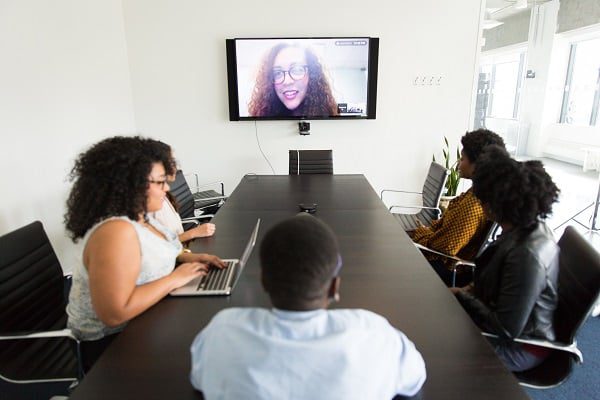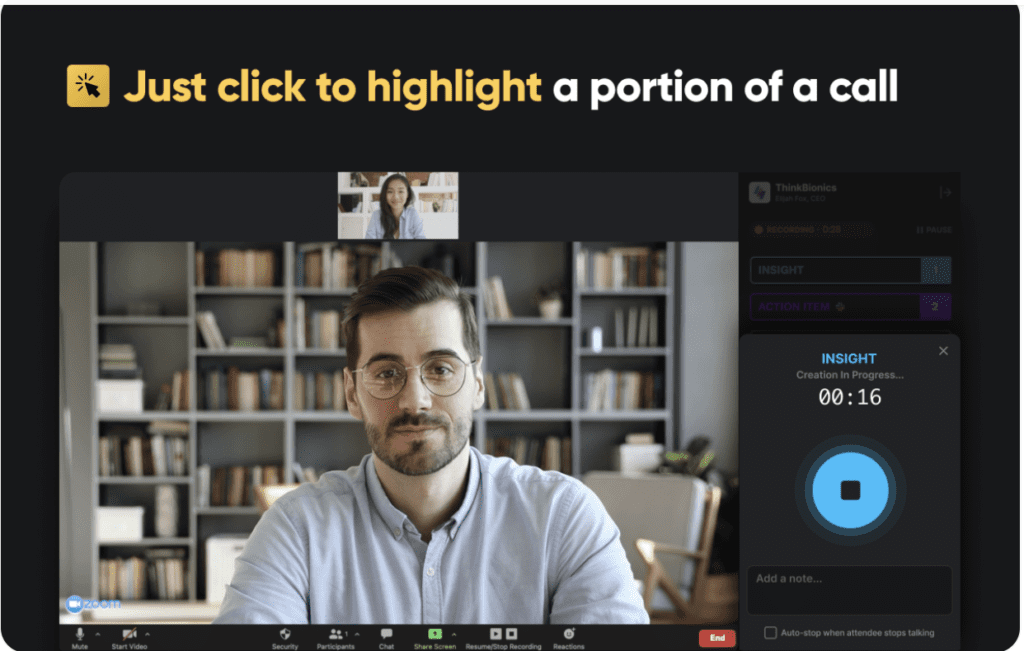Managers may find onboarding new employees to be a difficult task. Not only do you have to worry about getting them up to speed on company rules and procedures, but you also must ensure that they feel at ease in their new working environment. Making the onboarding process easier by creating a virtual world that as closely mirrors the real world as possible is something this article will address.
What Is Virtual Onboarding Process?

The virtual onboarding process is when a company uses technology to help transition a new employee. This can be anything from online training modules to video conferencing software that simulates an in-person meeting. Virtual onboarding aims to make the process as smooth and efficient as possible for both employers and employees.
How Do You Create A Good Virtual Onboarding Experience?

Many factors go into creating an excellent virtual onboarding experience.
1. Make Sure You Provide Adequate Training And Resources. Online modules, videos, and other materials can help new employees quickly get up to speed on company policies and procedures. One of the easiest ways to make it easier for new employees to catch up on company tools and systems is by creating a knowledge hub covering all topics new employees need to complete their onboarding training. Some popular tools used for this are Notion, Trello, and tl;dv. tl;dv provides an even more visual way to train new employees through custom-made or standard videos for new employees. By identifying the key areas of your organization that need in-depth understanding, categorize them and make videos, write guides and create detailed documentation for them. The already mentioned tools are great ways to distribute text content and videos for easy and self-paced access.
2. Create A Supportive Environment through regular communication and feedback. Whether through video conferencing software or team meetings, make sure employees feel comfortable asking questions and sharing their thoughts and ideas with others. Virtual onboarding is heavily reliant on various tools to be successful. But that does not mean super expensive or out-of-reach tools. A tool like Slack is great for communication. Trello is perfect for tracking projects and tl;dv perfect for sending in-depth messages that have a more visual or demonstration side to them. In general, a Slack channel is quite enough for fast and easy communication as it allows both PC and mobile phone access.
3. Tailor The Virtual Onboarding Experience to the needs of your specific team or organization. This can involve customizing training content based on job roles or incorporating unique tools or technologies into your onboarding process.
4. Prioritize User-Friendliness And Accessibility. It’s essential to keep in mind the needs of your employees and other stakeholders within your organization. This might mean making your virtual onboarding experience mobile-friendly or providing various language options for those who are non-native English speakers.
Accessibility also means new employees are able to go through the onboarding process on their own and at their own pace. Long hours of onboarding over a single week mostly doesn’t work for many and they will be back for information when they hit a snag. Why not make it easy for them to fish for information on their own? A knowledge hub or knowledgebase is one of the best ways to continually support the onboarding process in a practical and self-paced manner.
Google Docs and Notion are great tools for building a simple and yet searchable knowledge base with chapters based on specific common problems, topics, and issues that came up during the early days. You could even have advanced topics in there to make sure that every employee has a hub they can always look up to when they hit a snag or need to learn more about the organization.
For meetings, using tl;dv in all meetings makes your organization better and more productive as no one absolutely has to watch entire hours of video for a few minutes of content that they are looking for. With tl;dv, the use of timestamps and notes allows you to easily jump to aspects of any meeting that you want to revisit. If you prefer a more detailed look at the video, you could switch to transcripts and revisit the meeting in text.
5. Emphasize The Importance Of Ongoing Professional Development. Ongoing training and support are crucial for helping employees grow and thrive in their roles, no matter the place of work; in-person or remote. Implementing a buddy system is one of the best ways to ensure the ongoing development of all your new employees.
Making friends is quite difficult for some new employees, especially in fully remote roles. Assigning them a buddy can make it easier for them to make friends, connect with the entire team, and have a pair of shoulders that they can depend on when they need help.
6. Make Sure To Set Realistic Expectations. It’s critical to understand and have a plan to meet expectations from the start and let employees know that virtual onboarding is not a replacement for in-person interaction.
New employees will usually take some time to achieve their best performance. But that doesn’t happen by chance. Having well-established and communicated realistic expectations is the best way to get new employees up to speed without sacrificing productivity or revenue. A ramp-up plan is the best way to set the realities of the role and what new employees have to do a day on day, week on week, and so on.
By establishing the necessary OKRs, KPIs, and timelines, you are setting the new employee up for climbing the ramp-up curve with much ease. Your employee materials should be designed to follow expectations and help them get what they need exactly when they need it. It all starts with tailoring your onboarding for each role and empathizing with the new employees to find the resources, tools, and support they need to achieve amazing results.
7. Encourage Socialization And Networking. Socializing and networking are important for helping employees feel connected to their colleagues, even if they’re not working in the same physical space. This can be done through virtual happy hours with Donut and Happy Hour, online games with Emoji Stories, or other social activities. Other employee engagement tools like butter.us and icebreaker.video are also great for creating more engaging employee sessions that contribute to team bonding and building corporate culture.
8. Prioritize Employee Wellbeing. The onboarding process can be stressful for both new and existing employees, so it’s important to take steps to support their mental and physical health during this time. This might include providing work-from-home options or offering a flexible schedule to help reduce stress levels. Zoom fatigue as online meeting sessions have become normal is real and new employees can easily get stressed out with so many things going on. Have other learning avenues such as using social events through platforms like Donut. Using tl;dv and other online tools, you can reduce the psychological pressure on employees in general and new employees.
9. Keep In Mind That Virtual Onboarding Is An Ongoing Process. Just as with any other type of onboarding, virtual onboarding is an ongoing process that should be continuously refined and improved over time. As your team grows and changes, so too should your onboarding procedures.
10. Above All Else, Remember That The Onboarding Process Is Collaborative. It’s critical to work closely with your team members, stakeholders, and other relevant parties to create an onboarding experience that works for everyone. You can create the best virtual onboarding experience for your new employees by taking these considerations into account.
By focusing on these factors, you can create a virtual onboarding experience that is effective, engaging, and supportive of your employees’ needs. Whether you’re an employer or an employee, the key is to view virtual onboarding as an opportunity for growth and development, not just another task on your to-do list. In addition, by embracing technology and working collaboratively with your team members, you can achieve great results in the workplace no matter where you are.
Ideas For Great Virtual Onboarding Experiences

Welcome Package
Send your new hire a package with company swag and information about the company’s culture, values, and goals. This will help them feel more connected to the team and set a positive tone for their onboarding experience. An employee welcome package can also include items that will help the new hire get acclimated to their virtual offices, such as a list of team members and their contact information; a virtual office tour, and virtual calendars.
Onboarding Portal
Create a portal where new hires can access information about the company, their team, and their role. This can include job descriptions, contact lists, org charts, and more. This virtual tool can help your new hires feel more comfortable and confident as they begin their onboarding process.
Consider offering virtual training courses that teach new employees about the company, its products and services, and best practices for working successfully within the organization. These courses will help prepare them for success in their roles, reducing anxiety about what to expect on their first day. All these resources should be easily accessible in a single portal or perhaps two.
Having many platforms where resources can be accessed makes it tiresome and stressful. By recording all training sessions with accurate timestamps on tl;dv, you can reduce the stress and help your new employees maintain mental balance as they grow in your organization.
Online Training Modules
Develop online training modules that new employees can complete at their own pace using tl;dv for video libraries, and Notion and Google Docs for documentation. This can be a great way to introduce them to company policies and procedures. In virtual settings, virtual training sessions can be an especially effective way to help new employees acclimate to their roles and responsibilities.
Some ideas for virtual training sessions include virtual meetings with managers or colleagues; online courses or webinars, and virtual presentations from senior staff members on company values and vision. By providing your new hires with engaging training experiences in a virtual setting, you can ensure that they have all of the resources they need to succeed in their role.
Video Conferencing
Use video conferencing software to hold regular meetings with new employees. This can help them feel connected to their colleagues and get answers to any questions they may have. It also allows you to see how they are settling in and if there are any issues that may need to be addressed. With virtual conferencing software, new employees can feel like a true part of the team from the very beginning, helping them acclimate to their new work environment more quickly.
Social Activities
Encourage socialization and networking by organizing virtual happy hours, online games, or other social activities. Fun and lively social activities can help new employees feel more comfortable and foster a sense of camaraderie among colleagues. They can also help reduce feelings of isolation and further help them get the entire corporate cultural vibe.
Work Buddy System
Pair new employees with existing team members who can act as mentors and support them during the onboarding process. This can be a great way to build relationships and help new hires feel comfortable in their roles. In addition to a buddy system, you may also want to consider assigning virtual mentors or coaches who can offer one-on-one guidance throughout the onboarding process. This can be especially helpful if your new hire has questions or concerns that are specific to their role or team.
Ongoing Feedback
Regularly solicit feedback from new employees about their experience, and work to address any issues or concerns they may have. You can create a more effective virtual onboarding program that sets everyone up for success by listening to your team members and addressing their needs. Feedback can help you determine what aspects of virtual onboarding are working well and which areas might need some improvement. By monitoring feedback, you can ensure that your
Gamification of Your Virtual Onboarding Process
Consider using gamification techniques to engage new hires and make the onboarding process more enjoyable. For example, you might create leaderboards or awards for completing certain tasks or milestones. This can help create a sense of camaraderie and encourage new hires to work harder and perform better.
Automating The Process
Consider automating as many tasks as possible to streamline the onboarding process and minimize administrative work. This might include setting up automatic reminders, sending out onboarding checklists, or using other productivity tools that can help new hires stay organized and on track. tl;dv serves as a repository of old meeting sessions, and pre-recorded training materials complete with timestamps and transcripts, in case new employees would rather read the documentation.
Such an onboarding system takes any employee from 0 to hero on relevant company information in an automated way as videos can be arranged in order of timeline and needs to help them operate a self-paced learning system that is not hindered by other staff due to occurrences like mismatching calendars, different time zones and more.
Creating A Supportive Environment
Finally, remember that virtual onboarding is primarily about creating a supportive environment where new employees can grow and thrive. By prioritizing employee wellbeing, providing regular feedback, and focusing on collaboration and communication, you can give your team members the support they need to succeed in their roles.
Use Short Training and Instructional Videos
Include video content in your virtual onboarding process to help new employees understand company policies and procedures. These videos can be short and to the point, covering dress code, attendance policy, work hours, and more. A better way to use short videos is by creating a knowledge hub with tl;dv.
Your knowledge hub could include tutorials on how to log in to organizational systems, setup tools, how to perform certain tasks, and other critical aspects such as company story, values, and vision. These aren’t things that change often. And by making videos for them, you save time from having to get staff on meetings that take hours when everything could be communicated in a short video on tl;dv.
Using videos as part of your onboarding process can give new employees the information they need while also making the onboarding experience more engaging and enjoyable.
Make It Interactive
Make your virtual onboarding experience interactive and engaging by incorporating quizzes, polls, surveys, and other elements that encourage new hires to participate. This can help them retain information and stay engaged with the material.
tl;dv enables you to take the now typical video conferencing onboarding and make it a self-paced, automated, and better experience for new hires. With video hubs, timestamps, and self-paced nature, you can be sure new hires will assimilate well into the culture while acquiring the necessary knowledge about the company, how to do their job better, and achieve high productivity levels.
You might also consider using virtual reality (VR) or augmented reality (AR) to create an immersive onboarding experience. VR and AR can simulate real-world scenarios, helping new employees get comfortable with their job responsibilities and feel more confident in their roles.
Overall, by creating an effective virtual onboarding process that engages your new hires and sets them up for success, you can help your company attract and retain top talent while driving workplace productivity and growth.
Conclusion
Onboarding new employees can be a daunting task, but you can create a virtual onboarding experience that is both effective and enjoyable for your team by following these tips. There are many ways to make your virtual onboarding process more engaging and successful, from using videos and interactive elements to automating tasks with tl;dv and incorporating VR/AR.







